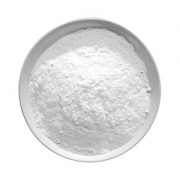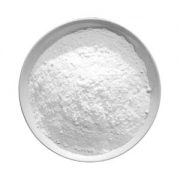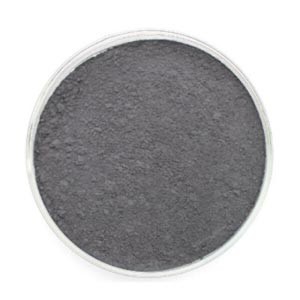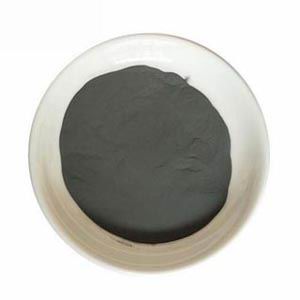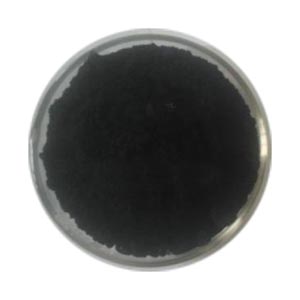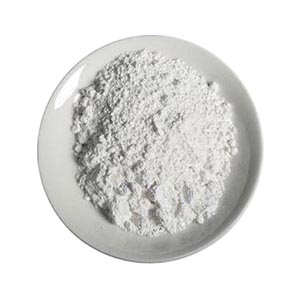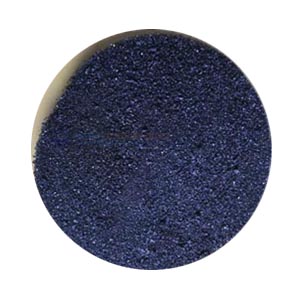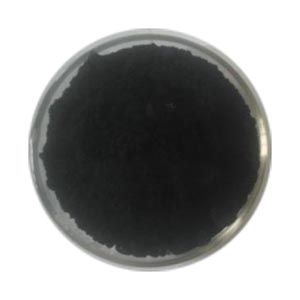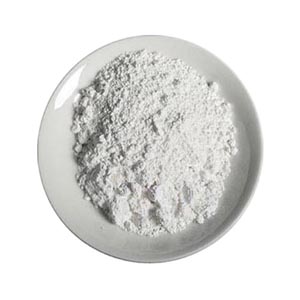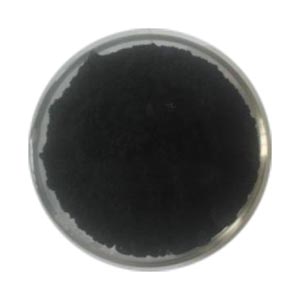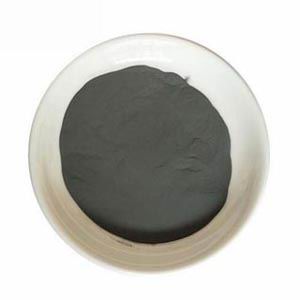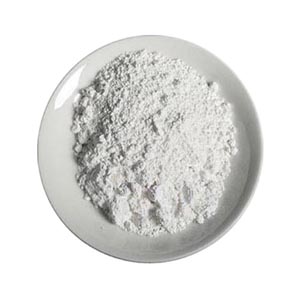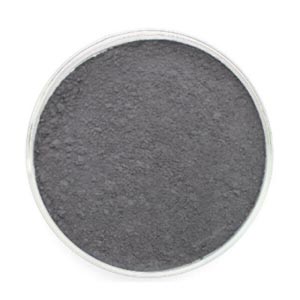
Hafnium carbide powder
CAS no. : 12069-85-1
EINECS no. : 235-114-1
Molecular formula: HFC
Molecular weight: 194.5325
Melting point: 3890 ℃
Density: 12.7 g/cm3
- 描述
- Inquiry
Particle size: 1–3um ( or produce according to customer requests )
Purity: 99.5%
Crystal: hexagonal
Specific surface area: 15.9m2/g, 7.8m2/g
Appearance: gray black powder
Product features
1) hafnium carbide (HfC) is a gray-black powder, which belongs to face-centered cubic structure and has a very high melting point (3890℃). It is the highest melting point in a single known compound and a good material for the lining of metal melting crucible with a high melting point.
2) the highest melting point of known substances is hafnium alloy (Ta4HfC5), hafnium alloy of 20% HfC and 80%TaC, a mixture of 1 hafnium carbide and 4 tantalum carbide, with a melting point of up to 4215 ℃, which can be used as structural materials for jet engines and missiles.
3) hafnium carbide has a very high coefficient of elasticity, good electrical and thermal conductivity, very small coefficient of thermal expansion and good impact resistance, very suitable for the field of rocket nozzle materials, is also an important metal ceramic materials.
Application field
1) hafnium carbide is a kind of ceramic material with high temperature resistance and oxidation resistance, which has the advantages of good electrothermal conductivity and small thermal expansion. Hafnium carbide is suitable for the manufacture of rocket nozzles and the leading edge of wings and other important components, mainly used in aerospace, industrial ceramics and other fields.
2) hafnium carbide has a high hardness, can be used as additives for hard alloy, can form a solid solution with many compounds (such as ZrC, TaC, etc.), has been widely used in the field of cutting tools and molds.
3) hafnium carbide has high elastic coefficient, good electrothermal conductivity, small coefficient of thermal expansion and good impact resistance, suitable for rocket nozzle materials, can be used in the nose of the rocket part, in the aerospace field has an important application, in the nozzle, high temperature resistance lining, arc or electrolytic electrode also has an important application.
4) hafnium carbide has good solid stability and chemical corrosion resistance, which has great potential for use in high temperature environment. In addition, the field emission performance of carbon nanotube cathode can be improved by evaporation of HfC film on the surface.
5) the addition of hafnium carbide to C/C composite material can improve its ablative resistance. Hafnium carbide has many excellent physical and chemical properties, making it widely used in ultra-high temperature materials.
相关产品
-
Molybdenum disilicide
Other name: Molybdenum silicide
Molecular formula: MoSi2
CAS number: 12136-78-6
Molecular weight: 152.11
Melting point: 2030 ° C
Density: 6.24g/cm3 -
Tantalum silicide
CAS no. : 12039-79-1
EINECS no. : 234-902-2
Molecular formula: H6Si2Ta.
Molecular weight: 243.16654
-
Titanium carbonitride
English alias: TITANIUM CARBONITRIDE (7:3); TI (C/N) 30/70 a; TI (C/N) 30/70 b; TI (C/N) 30/70 C; TI (C/N) 50/50 a; TI (C/N) 50/50 b; TI (C/N) 50/50 C; Titanium carbon nitride; TiCN
CAS no. : 12654-86-3
Formula: TiCN
Molecular weight: 121.75
MDL: MFCD01868685
Density: 5.08 g/mL at 25 ℃ (lit.)
Melting point: > 350 ℃ (lit.)
-
Ammonium niobium oxalate
English alias: Ethanedioic acid ammonium niobium (5 +) salt , Ammonium niobate (v) oxalate hydrate
CAS no. : 168547-43-1
Molecular formula: C4H4NNbO9
Molecular weight: 302.98 g / mol
-
Tungsten hexachloride
English alias: Tungsten (VI) chloride; Tungstenchloride; Tungsten (6 +) hexachloride; Tungsten (4 +) tetrachloride; Tungsten chloride
CAS no. : 13283-01-7
EINECS no. : 236-293-9
Molecular formula: Cl6W
Molecular weight: 396.558
Melting point: 275 ℃
-
Niobium diselenide
Other name: Niobium(IV) selenide, Niobium selenide; Columbium selenide; diselenoxoniobium; niobium(+4) cation; selenium(-2) anion
CAS no. : 12034-77-4
EINECS no. : 234-811-8
Formula: NbSe2.
Molecular weight: 250.8264.
Density (g/mL,25) : 6.3
-
Niobium metaphosphate
English name: Niobium metaphosphate
Chemical formula: Nb (PO3) 5
Molecular weight: 487.90
Properties: sodium biphosphate glass, white powder, insoluble in water, PH value: 3.8
-
Nano vanadium dioxide VO2
Other name: Vanadium oxide; Dioxovanadium
Appearance: black powder
Grain size: 50nm, 100nm, 500nm
Purity: 99.9%, 98% ( tungsten mingle ) -
Tantalum diboride
Other name: tantalum boride (1:2)
CAS no. : 12007-35-1
EINECS no. : 234-234-5
Molecular formula: B2Ta.
Molecular weight: 202.572
-
Zirconium acetylacetonate
Other name: Zirconium-2,4-pentanedionate, Zirconium(IV)acetylacetonate; Tetrakis(acetylacetonato)zirconium(IV); 2,4-pentanedione,zrderiv.; acetyl-zirconiuacetonate; nasemuzirconium; orgatixzc150; pentane-2,4-dione-zirconium (4:1);
CAS no. : 17501-44-9
EINECS no. : 241-241-5
Molecular formula: C20H28 Zr O8
Molecular weight: 487.6555.
Melting point: 171-173℃

